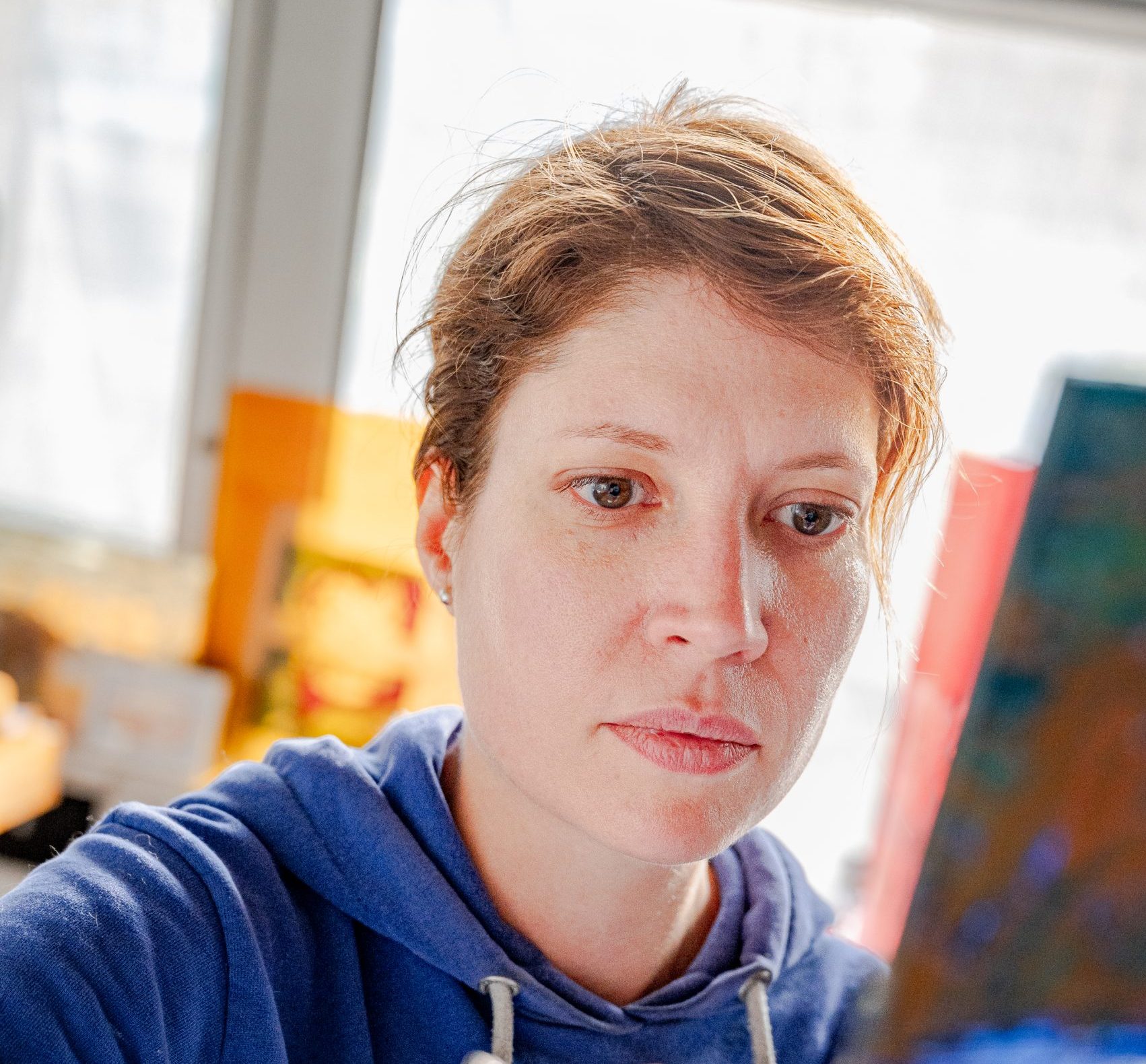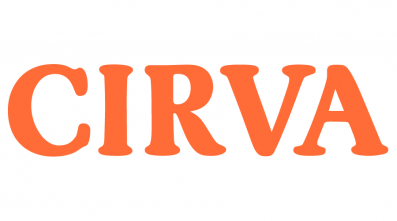Céline Bachelot
Stained glass artist and glass painter
Fall 2026

- Craft & Design
- Boston
“By layering and engraving colored glass, I aim to generate a form of luminescence that can be further enhanced by programmed LED systems. These LEDs will be designed to respond to live music, producing a monumental and immersive scenographic experience where light becomes a living, reactive presence.”
I am a glass artist, specialized in glass painting, engraving and kiln formed glass low relief. I trained in stained glass at ENSAAMA Olivier de Serres in Paris and furthered my studies at the Sorbonne in art conservation and restoration, specializing in the study of glass technologies. I view stained glass as a form of sequential storytelling, using light through transparency or projection—long before cinema—yet with the same potential for wonder. In each of my pieces I write a story or present a universe. My work sits at the intersection of art and science.
Early in my career, confronted with the health risks associated with lead, I developed and patented a lead-free soldering method, then turned my research toward ancient, low-energy techniques such as cold painting and manual engraving.
My research is fueled by travel and encounters with professionals and scientists, in residencies, experiments or explorations. Including the exploration of obsidian mines in Mexico with archaeologists, who taught me pre-Hispanic techniques of engraving and polishing obsidian.
More recently, I have been exploring the interaction between music and light, experimenting with the responsiveness of light to sound to animate my works, in collaboration with musicians and LED programming specialists. My research is shared through group exhibitions, such as Les Aliénés du Mobilier National de Paris in 2024 (Résilience Lagunaire de Venise) or The Venice Glass Week Hub in 2025 (Sole Oltre) and performances (Réflexions, 2025).
Céline Bachelot is a glass artist. Trained as a stained-glass painter and designer at ENSAAMA–Olivier de Serres and as a conservator-restorer at the Sorbonne, she combines artistic creation with scientific research for which she won several grants (Sorbonne, Fondation banque populaire). Her work has been exhibited at The Venice Glass Week Hub 2025 and the Mobilier National 2024. She previously trained on major heritage sites and have held residencies in Paris, Colorado, and Cambridge, where she developed engraving processes now central to her work. More recently she explored in residency audio reactivity of light to link glasswork and music.
My project, borned in former residencies in Cambridge-Boston and France, investigates the dialogue between glass, light, and sound through both natural and artificial means. By layering and engraving colored glass, I aim to generate a form of luminescence that can be further enhanced by programmed LED systems. These LEDs will be designed to respond to live music, producing a monumental and immersive scenographic experience where light becomes a living, reactive presence.
At the core of this research lies my wish to explore, in dialogue with Professor Michael Strano’s team at MIT, the potential of bioluminescent films applied to glass. Such materials could open new perspectives for sustainable and responsive lighting, while deepening the expressive possibilities of audio-reactive environments. Alongside this, I plan to pursue large-scale engraving at MassArt, drawing on its technical resources, while documenting historical approaches to layered glass at institutions such as the L.C.Tiffany and J.LaFarge collections.
My artistic motivation stems from a long-standing dialogue between light and music. Music’s ephemeral and incorruptible nature embodies for me a form of the sacred, and I seek to transpose this quality into works where glass and light respond to every vibration and note. The resulting interplay promises an experience of transcendence, merging visual and auditory harmonies.
The project is equally guided by an ethical commitment. For several years I have pursued alternatives to toxic practices in glassmaking, from developing a lead-free setting system to promoting cold-painting techniques. Today I continue this trajectory by researching engraving methods that may limit the use of hydrofluoric acid, one of the most hazardous substances in the field.
I would like to bring to light and life a monumental piece to end the residency with a performance with live music.
In Summer 2024, I spent two months in Somerville–Cambridge, in the Boston area, for a residency at the Linda Lichtman Studio. This experience revealed the city’s exceptional potential for an art-and-science approach to glass. Boston combines a rich cultural heritage, a vibrant artistic life, and the proximity of the ocean with the comfort of a major metropolis. Deeply committed to research, education, and cultural exchange, the city offers a space of openness and dialogue, countering the currents of withdrawal seen elsewhere. I aim to engage in this dynamic, collaborating in research and art, and contributing to innovative projects that inspire and captivate.
During my stay, I made two pivotal discoveries that have shaped my current work. First, hand engraving on rare hand-blown glass which allows me to “paint by engraving.” Second, the luminescent light of L. C.Tiffany’s stained glass, observed in double and triple layered compositions, producing effects reminiscent of science-fiction. These discoveries inspired a new approach: creating abstract landscapes using only the intrinsic properties of glass, without paint or lead exposure.
To explore large-scale engraving, I partnered with the MassArt’s glass department. I also aim to develop experimental collaborations with a research team at MIT and visit Haystack Mountain School of Crafts to enrich my approach.
Beyond the artistic work, I really liked Boston. Its historic streets, vibrant neighborhoods, and accessible natural escapes provide the perfect balance for focused creative exploration, and the autumnal colors of the region are stunning.
In partnership with

CIRVA
The International Glass and Visual Arts Research Centre (Cirva) is an art centre that places creation at the heart of its project. Occupying a unique position on the world stage since 1983, it invites artists and designers to work with a precise material, glass, in an atmosphere of total freedom. At the Cirva’s studio, they are met by a team of very high-level glass technicians with whom a dialogue begins. This exchange unfolds over the course of time, a valuable resource that the Cirva nurtures by taking care not to predetermine the exact length of each collaboration. It is instrumental in allowing the artists to undertake bold experiments during which unlimited avenues of thought encounter a material with a complex and unpredictable reputation.
The Cirva is a non-profit association, recognized for general interest, which has been supported since its creation by the Ministry of Culture / regional directorate of cultural affairs Provence-Alpes-Côte d’Azur, by the City of Marseille, by the Sud Paca regional council and the Bouches-du-Rhône departmental council.

Banque Populaire Foundation

Fondation Bettencourt Schueller
As a family foundation and a public-interest foundation at the same time, the Fondation Bettencourt Schueller has chosen to “take talents to the top” to contribute to France’s success and influence.
To this end, the Foundation seeks, selects, supports and promotes women and men who are rethinking our future in three fields that make a tangible difference to the common good: life sciences, the arts and an inclusive society.
With a philanthropic mindset, the foundation takes action through prizes, donations, personalized support, effective communication and co-created initiatives.
Since the foundation was founded in 1987, it has awarded prizes to 676 laureates and supported more than 1,400 projects led by talented individuals, teams, associations and organizations.
For more information: www.fondationbs.org | Twitter: @Fondation_BS | Instagram: @fondationbettencourtschueller | Facebook: @BettencourtSchuellerFoundation | #TalentFondationBettencourt

Massachusetts College of Art and Design


